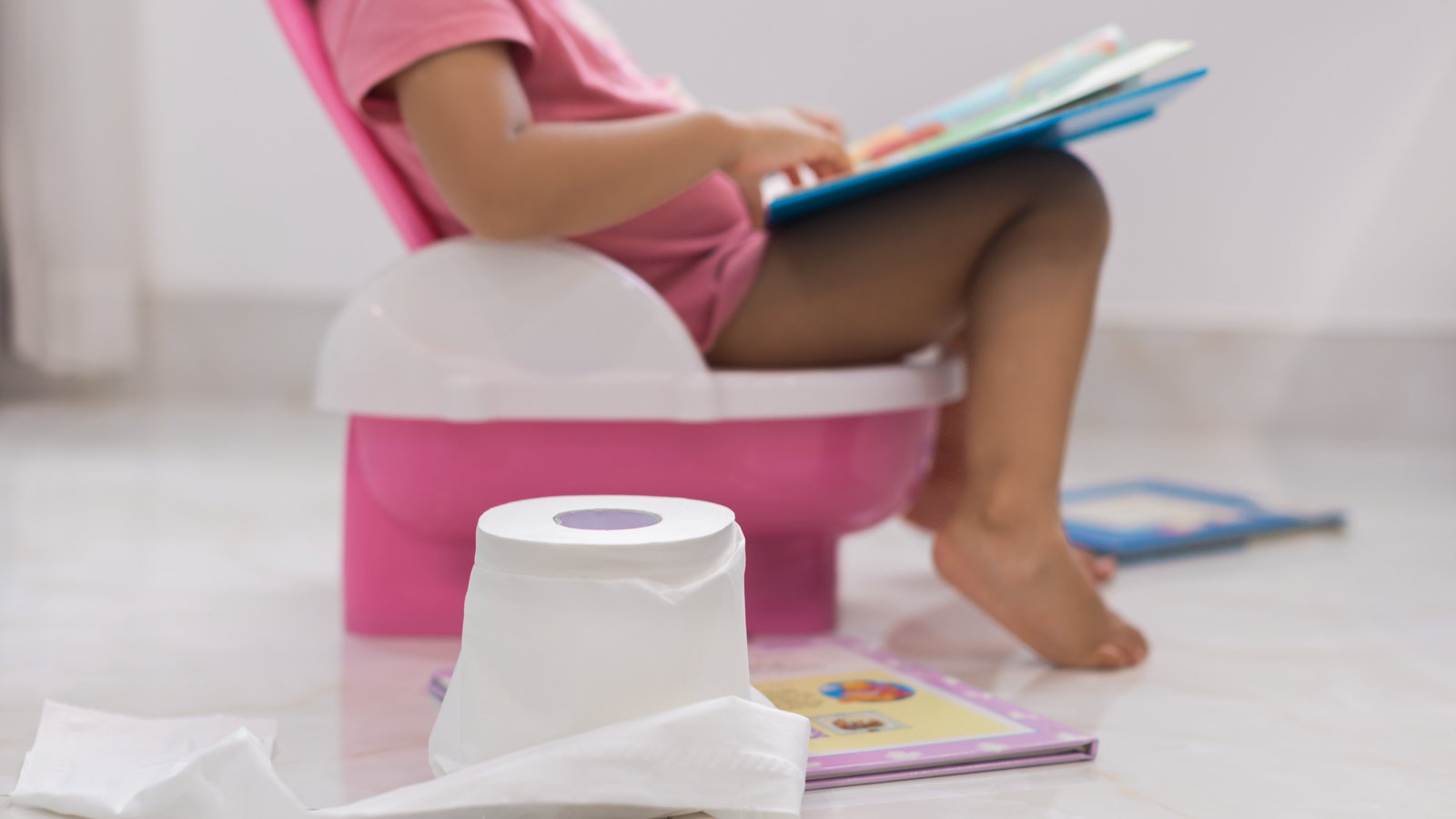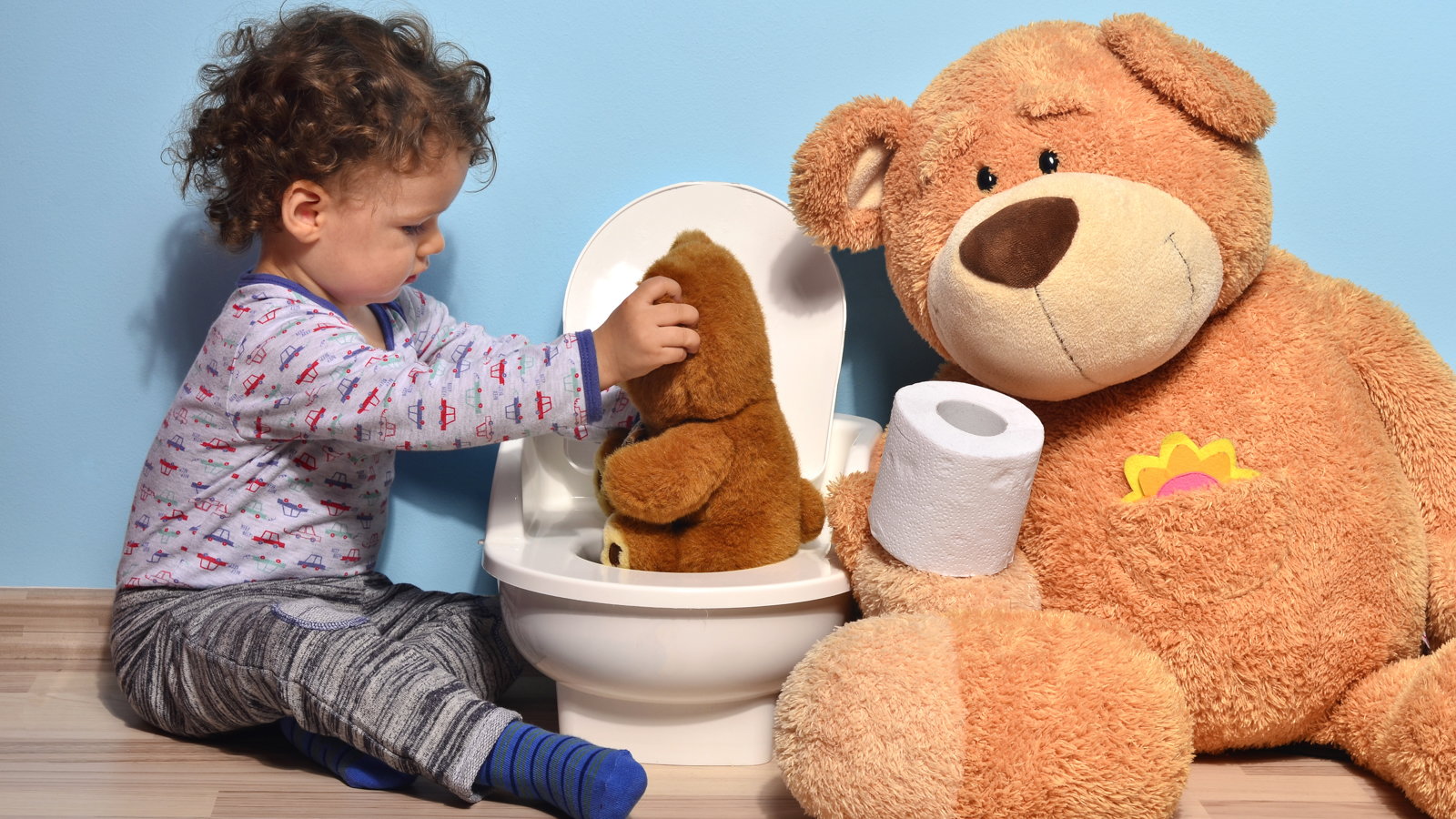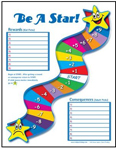
Toilet training is an essential hurdle for both parents and children. It is a task that everyone needs to do, and one that often strikes panic in the eyes of parents. But it can be an easy event that marks significant growth and development.
When Should a Child Be Potty Trained?
Age 2 is the best time to train. Children are ready when they can run and say “pee” and “poop” or any other words that are clear to the parent.
Two-year-olds want to be independent. Early two’s still want to please their parents, vs. late two’s who are struggling for control (thus the term “the terrible twos").
It is important to train from age 2 to 2.5, so that parents “catch the wave.” By this, I mean, they are using the child’s natural curiosity about things that go “ in and out.”
Potty training is the first step in learning self-control. When training begins in the latter half of the second year, the issues of control can invade the process, and sometimes stool withholding develops (a child becomes constipated because they do not want to poop).
I can hear many of you saying, but age 2 is so early!

Actually, in the old days, circa 1950-1985, diapers could not contain the urine of two-year-olds. So, children were trained at age two. Moms started training later, at age 3 and beyond, when diapers became more efficient.
(My pet peeve: children using a computer while wearing a diaper. If kids know the connection between a keyboard and a picture on a screen, they are capable of understanding the connection between an internal feeling (the need to pee or poop) and a word to indicate that this is happening.)
3 Easy Steps to Potty Training!
Get Ready….
From 18-24 months allow your child to feel free to make a mess.
Perfectionistic parents may have problems training because they are overly concerned with cleanliness. Potty training is a process which is messy. Children need to know that mistakes are OK.
Have your child involved in these kinds of activities as often as possible:
- finger painting
- play-doh with extruder
- sand and/or water table
- any objects that demonstrate “in and out”
- easy-to-use small water gun/pistol
These kinds of activities are age appropriate and allow the child to practice skills which are related to the process of potty training. Parents should set-up the activities in a way that allows the child freedom to be messy. The child needs to be comfortable with wet and mush; and at the same time, to learn how to control things.
Use the water gun as follows: allow the child to use the gun anywhere outside, but inside, only in the potty and/or toilet. The child makes the connection between acceptable places (potty) to shoot water (pee). The activity is fun and therefore the child likes to repeat it. This allows the child to practice being in control.
In this time period, show your child where dogs and cats pee and poop. Let them follow older children to the bathroom. Read books about potty training. This is called priming, and it helps the child to focus and prepare.

Get Set…
Have potties wherever your child spends most of his or her time; for example, in every bathroom; in the playroom, on each floor of your house. Let the child explore the potties. Let kids put their stuffed animals on the potty. Let them squirt water into the potty and then empty into the big toilet.
Make sure your child uses words, such as pee or poop, when possible.
Talk about being a “big boy or big girl.” Go shopping with your child and let them pick out their own underwear.
Pick one week when you can spend as much time as possible at home.
(To help ensure nighttime dryness, it is important that the child no longer has a bottle at night. Reduce liquid intake in the evening and increase it in the morning and early part of the day.)
Go…
Let your child run around with a t-shirt and no bottom.
Ask your child to tell you when he/she feels the need to pee or poop. When you see it is about to happen and/or when they tell you; pick them up and whisk them to the nearest potty. Each time they succeed, even a little bit, praise the child.
Remember: once you are committed to the process, don’t use diapers again. The child needs to feel the pee or poop. Once in underwear, the child needs the consistency of that feeling.
The question is not: is my child ready to train. It is “am I ready to train my child?”
About the Author:
 | Susan Lipkins, PhD, child psychologist, is the creator of Be a Star Rewards Chart, a parenting tool that quickly improves family dynamics. Kids love to use BE A STAR because they instantly see how their efforts and cooperation earn rewards. Successfully used for 25 years! |
